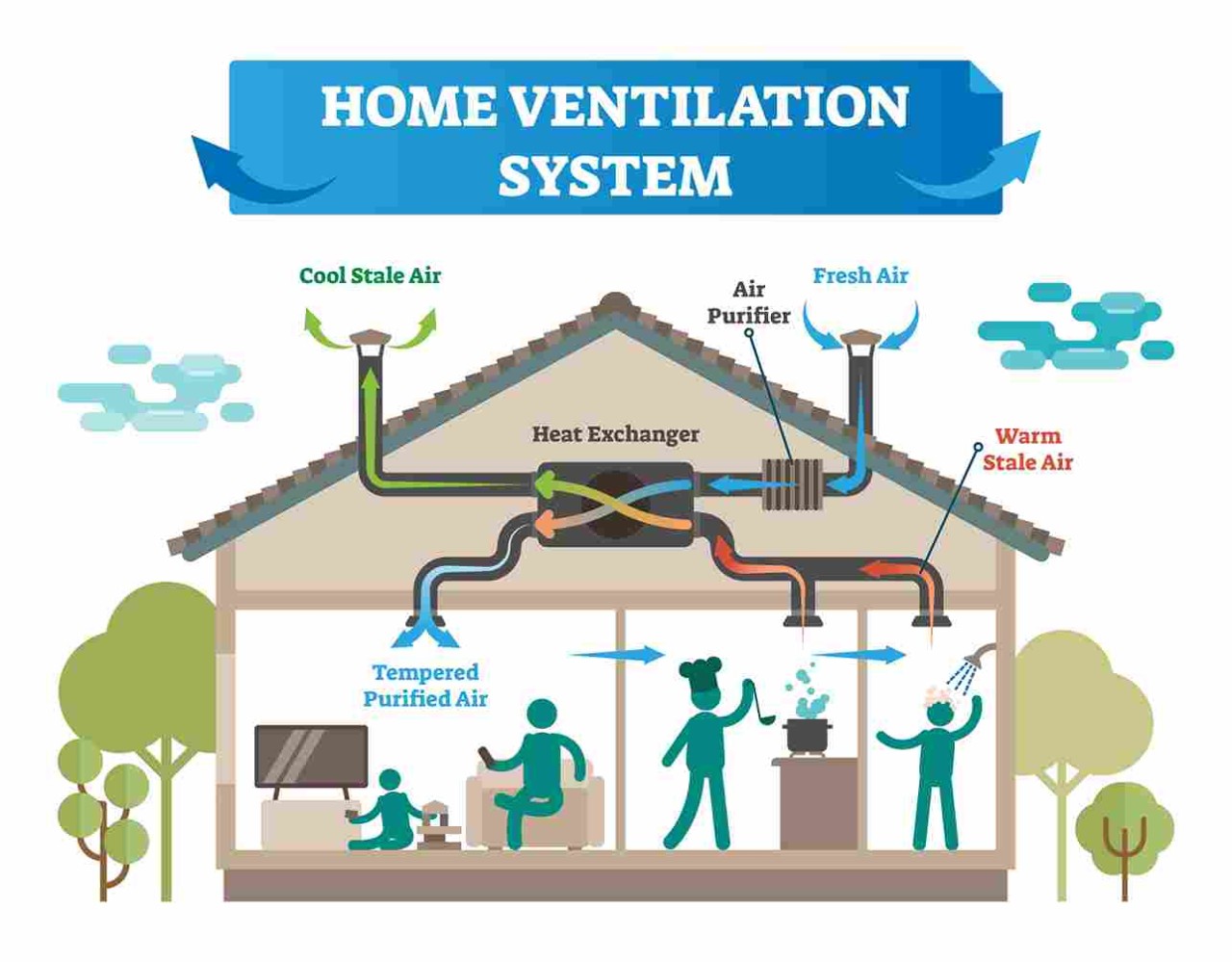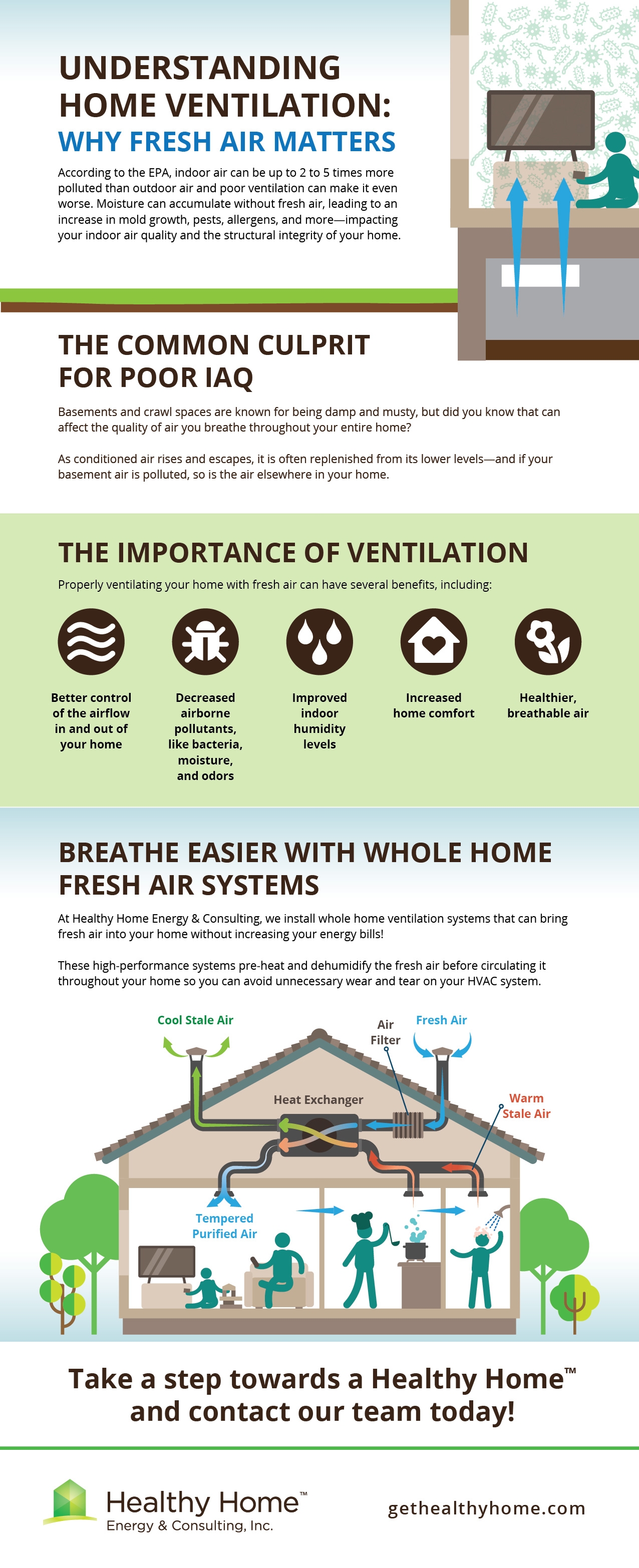Common Indoor Pollutants and How Home Ventilation Melbourne Reduces Them
Recognizing the Relevance of Home Ventilation for a Healthier Living Setting
Home air flow plays an important function in preserving a healthy living atmosphere. It helps with the exchange of interior and outside air, which is essential for improving air quality. Without proper ventilation, homes can become reproducing grounds for toxins and allergens. The repercussions of insufficient air circulation can be significant. This raises the query of just how homeowners can efficiently implement ventilation methods to safeguard their health and wellness. Understanding these methods is crucial.

The Basics of Home Air Flow
Home ventilation acts as a vital element of interior air quality and comfort. It involves the procedure of exchanging stale indoor air with fresh exterior air, thereby decreasing humidity and controlling temperature. Appropriate ventilation systems can consist of all-natural approaches, such as open home windows and vents, as well as mechanical systems, such as exhaust fans and air exchangers. Reliable home air flow helps prevent issues like interior mold development and the accumulation of hazardous particles. It likewise enhances overall energy efficiency, as well-ventilated rooms can maintain comfortable temperatures with much less reliance on home heating and cooling systems. Comprehending the fundamentals of home ventilation is vital for home owners seeking to create a much healthier living setting on their own and their households.

Usual Resources of Indoor Air Air Pollution

Lots of may not recognize it, indoor air pollution can stem from numerous resources within a house. Typical contributors include volatile natural compounds (VOCs) released from paints, solvents, and cleaning items. Home devices, such as gas ovens and fire places, can release dangerous gases like carbon monoxide gas and nitrogen dioxide. In addition, mold and mildew and mildew flourish in damp locations, releasing spores that influence air quality. Family pet dander, allergen, and pollen can collect indoors, more intensifying air pollution levels. Smoking inside your home generates hazardous chemicals that stick around airborne. Lastly, constructing products, including asbestos and formaldehyde, can off-gas hazardous compounds. Identifying these resources is vital for maintaining a healthier interior atmosphere and advertising effective ventilation strategies.
Wellness Effects of Poor Ventilation
Indoor air pollution can have significant wellness implications, particularly when ventilation is poor. Poor ventilation can lead to the accumulation of damaging toxins, such as unstable organic compounds, mold and mildew, and particle issue. This accumulation may lead to breathing problems, including bronchial asthma, allergic reactions, and persistent obstructive pulmonary disease. Individuals may experience symptoms like frustrations, exhaustion, and irritation of the eyes, nose, and throat. Vulnerable populaces, such as youngsters and the senior, are at higher threat for extreme health and wellness effects. Long-lasting exposure to inadequately ventilated settings can likewise contribute to much more serious conditions, including cardio diseases. Subsequently, guaranteeing proper air flow why not try here is essential for maintaining a healthy and balanced living atmosphere and decreasing the danger of health and wellness difficulties linked with interior air contamination.
Reliable Air Flow Methods for Your Home
Proper ventilation is important for keeping a healthy and balanced interior setting, and applying efficient methods can substantially boost air high quality. Homeowners can start by ensuring that exhaust fans are installed in bathroom and kitchens to eliminate excess moisture and smells. Opening up home windows regularly permits fresh air to flow, specifically throughout mild climate. Additionally, making use of air cleansers with HEPA filters can assist record air-borne toxins. For homes with home heating and cooling systems, keeping heating and cooling systems and changing filters regularly is essential for peak performance. Integrating natural air flow methods, such as cross-ventilation, can additionally boost air flow. Finally, securing any leaks in home windows and doors avoids undesirable drafts, which can interfere with controlled air movement, eventually leading to improved interior air quality and convenience.
Keeping Ideal Air Top Quality Year-Round
To keep excellent air high quality year-round, house owners must embrace a proactive approach to managing their interior setting. Routinely keeping track of interior air top quality is important; this consists of monitoring for contaminants such as dirt, mold and mildew, and unstable organic substances (VOCs) Applying effective ventilation systems, such as exhaust fans and air cleansers, can greatly decrease air-borne contaminants. In addition, routine maintenance of heating and cooling systems assurances peak efficiency and air circulation. Property owners must also take into consideration moisture degrees, as too much dampness can bring about mold growth. Seasonal changes may demand adjustments in ventilation strategies to accommodate differing outdoor air top quality. By focusing on these techniques, homeowners can produce a healthier space, promoting total well-being for all residents throughout the year.
Frequently Asked Questions
Just How Can I Inform if My Home Demands Much Better Ventilation?
To determine if a home needs much better ventilation, one should observe indicators such as relentless moisture, mold growth, musty smells, condensation on windows, or enhanced allergic reaction signs and symptoms, showing inadequate air flow and potentially poor interior air high quality.
What Are the Signs of Poor Indoor Air Top Quality?

Can Houseplants Improve Indoor Air High Quality Efficiently?
The effectiveness of houseplants in enhancing indoor air top quality is disputed. While some research studies recommend they can take in contaminants and create oxygen, their total impact might be minimal compared to appropriate air flow and air filtering systems.
Just how Commonly Should I Change My Air Filters?
The regularity of air filter modifications commonly relies on use and filter kind. Normally, it is advised to replace filters every 3 months, though households with pet dogs or allergic reactions may call for even more regular adjustments for optimal efficiency.
Exist Any Type Of Details Ventilation Solutions for Allergic Reaction Sufferers?
Several ventilation systems, such as HEPA-filtered systems, properly decrease irritants in the air. Home Ventilation Melbourne. These systems catch dust, family pet, and plant pollen dander, supplying allergy patients with a cleaner, much healthier interior atmosphere while handling air top quality properly
It facilitates the exchange of outdoor and indoor air, which is essential for enhancing air high quality. Home ventilation serves as an essential component of indoor air high quality and comfort. It involves the process of trading stagnant interior air with fresh outside air, consequently decreasing moisture and managing read more temperature level. Indoor air pollution can have substantial wellness effects, especially when ventilation is poor. Proper ventilation is essential for keeping a healthy and balanced interior atmosphere, and executing effective approaches can significantly improve air top quality.